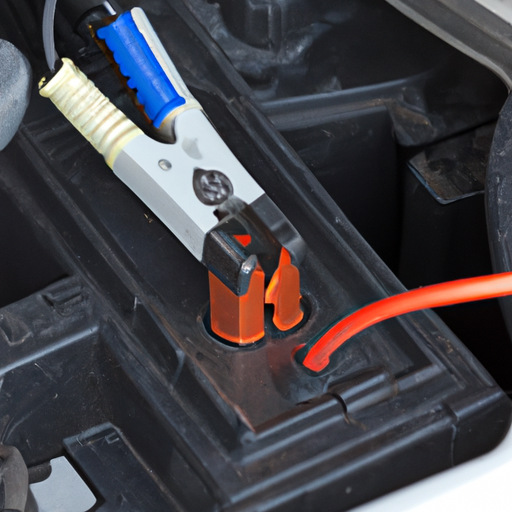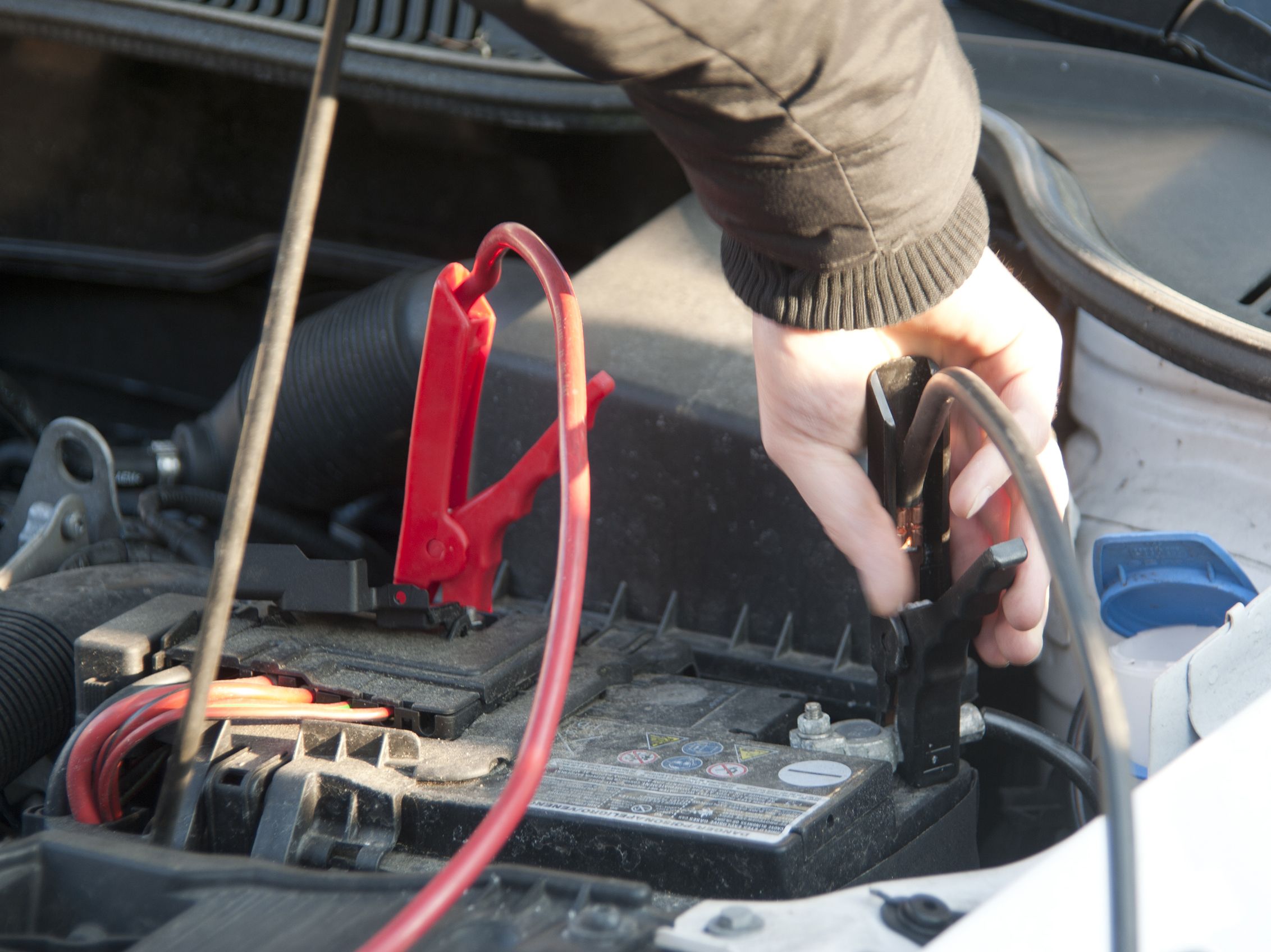Imagine this scenario: you’re rushing to get to work, already running late, when you turn the key in your car’s ignition and nothing happens. Your heart sinks as you realize your car battery is dead. In moments like these, knowing how to charge a dead car battery can be a game-changer. Whether you’re a seasoned car owner or a novice driver, understanding the step-by-step process of revive. A dead battery is a skill that can save you time, money, and frustration. In this guide, we will demystify the art of recharging a dead car battery. Equipping you with the knowledge and confidence to tackle this common automotive issue.

To begin, it’s crucial to understand the underlying causes of a dead car battery. From leaving the headlights on overnight to a faulty alternator, there are various reasons why your battery may lose its charge. However, fear not! Armed with a few simple tools and a basic understanding of the process, you’ll be able to jump-start your vehicle and get back on the road in no time. In the following paragraphs, we will explore the step-by-step instructions for charging a dead car battery, including the necessary precautions to ensure a safe and successful outcome. So, let’s dive in and empower ourselves with the knowledge to conquer this common automotive challenge!
How to Charge a Dead Car Battery:
- Connect the positive (red) cable clamp to the positive terminal on the dead battery.
- Connect the other end of the positive cable to the positive terminal on the working battery.
- Connect the negative (black) cable clamp to the negative terminal on the working battery.
- Attach the other end of the negative cable to an unpainted metal surface on the car with the dead battery.
- Start the engine of the car with the working battery and let it run for a few minutes.
- Try starting the car with the dead battery. If it doesn’t start, wait a few more minutes and try again.
 Source: hearstapps.com
Source: hearstapps.com
How to Charge a Dead Car Battery
In this informative article, we will guide you through the step-by-step process of charging a dead car battery. Whether you are a seasoned car enthusiast or a novice. This guide will provide you with the knowledge and skills necessary to get your vehicle up and running again. With a professional tone and detailed instructions, we will ensure that you can safely and effectively charge your dead car battery.
Gather the Necessary Tools and Materials
Before you begin the battery charging process, it is essential to gather all the necessary tools and materials. Here’s a list of what you’ll need:
- A battery charger
- A pair of safety goggles
- A wrench or socket set
- A clean cloth or rag
- A battery terminal cleaner
- A voltmeter or multimeter
- A well-ventilated area
Make sure you have all these items on hand before proceeding to the next step.
Step 1: Safety First
Before you begin working on your car’s battery, it is crucial to prioritize safety. Here are some essential safety precautions to follow:
- Ensure the car is turn off and the keys are removed from the ignition.
- Put on the safety goggles to protect your eyes from any potential hazards.
- Locate the battery in your vehicle. It is usually find under the hood.
- Inspect the battery for any signs of damage, such as leaks or cracks. If you notice any, do not attempt to charge the battery and seek professional assistance.
By following these safety measures, you can minimize the risk of accidents or injuries during the battery charging process.
Step 2: Prepare the Battery
Now that you’ve ensured your safety, it’s time to prepare the battery for charging. Follow these steps:
- Using the wrench or socket set, loosen the nuts or bolts that hold the battery cables in place.
- Remove the negative (black) cable first, followed by the positive (red) cable. Remember to keep the cables away from each other and any metal surfaces to prevent accidental sparks.
- Inspect the battery terminals for corrosion or build-up. If you notice any, use a battery terminal cleaner and a clean cloth to remove it.
Once you have completed these steps, your battery is ready for charging.
Step 3: Connect the Battery Charger
Now it’s time to connect the battery charger. Follow these steps:
- Refer to the manufacturer’s instructions to determine the appropriate settings for your battery charger.
- Connect the positive (red) cable from the charger to the positive terminal of the battery.
- Connect the negative (black) cable from the charger to a metal part of the vehicle’s frame. This will serve as the grounding point.
With the connections in place, you can proceed to the final step.
Step 4: Start the Charging Process
Now that everything is set up, you can start the charging process. Here’s what you need to do:
- Plug the battery charger into a power outlet.
- Set the charger to the appropriate charging mode as recommended by the manufacturer.
- Monitor the charger’s progress using a voltmeter or multimeter. Most chargers have built-in indicators that show the battery’s charging status.
- Allow the battery to charge fully. This may take several hours, depending on the charger and the battery’s condition.
- Once the battery is fully charged, disconnect the charger from the power outlet and remove the cables from the battery terminals.
With these steps dead car battery should now charged and ready to use again.
Remember to always exercise caution when handling car batteries. If you are unsure or uncomfortable with any step in the process, it is best to seek assistance from a professional mechanic.
Frequently Asked Questions
How do I charge a dead car battery?
To charge a dead car battery, you will need a set of jumper cables and a working vehicle with a charged battery. First, make sure both vehicles are turned off. Then, locate the positive and negative terminals on each battery. Connect one end of the positive jumper cable to the positive terminal of the dead battery and the other end to the positive terminal of the charged battery. Next, connect one end of the negative jumper cable to the negative terminal of the charged battery and the other end to a metal surface on the engine block of the dead car. Start the working vehicle and let it run for a few minutes to charge the dead battery. Finally, try starting the dead car. If it starts, let it run for a while to ensure the battery is fully charged.
It’s important to note that if you are not comfortable or unsure about the process. Then seek assistance from a professional or a roadside service provider to ensure safety and prevent any damage to your vehicle.
How long does it take to charge a dead car battery?
The time it takes to charge a dead car battery can vary depending on several factors, including the size and condition of the battery, the charging method used, and the charging device’s output. In general, it can take anywhere from 30 minutes to several hours to fully charge a dead car battery. It is important to follow the manufacturer’s guidelines and recommendations for the specific battery and charger should use to avoid overcharging or damaging the battery.
Additionally, if the battery is severely discharged or damaged, it may take longer to charge or may not hold a charge at all. In such cases, it may be necessary to replace the battery.
Can I charge a dead car battery without another vehicle?
Yes, it is possible to charge a dead car battery without another vehicle by using a portable battery charger. Portable battery chargers, also known as jump starters, are standalone devices that provide the necessary power to jump-start a dead battery. These chargers come with their own built-in battery and can easily connected to the dead car battery using jumper cables. Follow the instructions provided by the manufacturer of the portable battery charger for the specific steps on how to charge a dead car battery using this method.
Using a portable battery charger is a convenient option when there is no access to another vehicle or if you prefer not to rely on another vehicle to jump-start your car.
Is it safe to charge a dead car battery in the rain?
It is not recommended to charge a dead car battery in the rain. Water is a good conductor of electricity, and charging a battery in wet conditions can increase the risk of electrical shock or short circuits. Moisture can also damage the battery, charger, or other electrical components of the vehicle. Therefore, it is best to wait for the rain to stop or find a sheltered area before attempting to charge a dead car battery.
If you find yourself in a situation where you need to charge a car battery in wet conditions, it is crucial to take extra precautions, such as wearing insulated gloves and ensuring all connections are secure and dry. However, it is always recommend to prioritize your safety and seek professional assistance if need.
Can I leave a car battery charger connected overnight?
It is generally not recommended to leave a car battery charger connected overnight. Overcharging a battery can lead to damage, reduced battery life, and even pose safety risks, such as the potential for the battery to explode. It is important to follow the manufacturer’s instructions and guidelines for the specific charger being used and monitor the charging process to avoid overcharging.
If you need to charge a car battery for an extended period, it is advisable to use a charger with an automatic shut-off feature that stops charging once the battery is fully charged. This helps prevent overcharging and ensures the longevity of the battery. Additionally, it is always a good practice to periodically check on the charging process and disconnect the charger once the battery is fully charged.

Source: caaquebec.com
How to Charge a TOTALLY Dead Car Battery with Kent Bergsma: Battery Clinic Part 5
In conclusion, knowing how to charge a dead car battery is an essential skill for every driver. By following the step-by-step process outlined in this guide, you can confidently handle the situation when your car battery dies. Remember to gather all the necessary tools and equipment, ensure safety precautions are taken, and follow the manufacturer’s instructions carefully. With a little patience and effort, you’ll be able to revive your dead car battery and get back on the road in no time.
Lastly, it’s important to note that while jump-starting a dead car battery can be a temporary solution, it is crucial to address the underlying issue causing the battery to die. Regular maintenance and inspections of your vehicle’s battery, alternator, and charging system will help prevent future breakdowns. Additionally, if you find yourself frequently dealing with dead batteries, it may be time to consider replacing your old battery with a new one to ensure reliable performance. By staying prepared and proactive, you can avoid the inconvenience and frustration of a dead car battery and enjoy a smooth and worry-free driving experience.
- How to Diagnose Bad Strut Mounts: Expert Tips for Quick Fixes - May 16, 2024
- How to Bypass Blower Motor Relay: 7 Expert Techniques - May 16, 2024
- How to Easily Check Ecu Ground: Essential Steps for Optimal Performance - May 16, 2024
